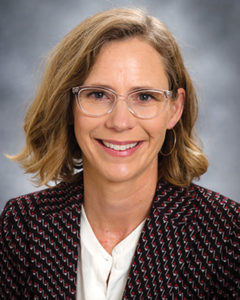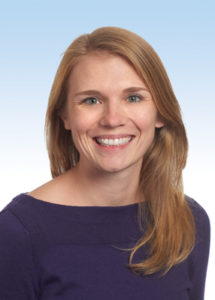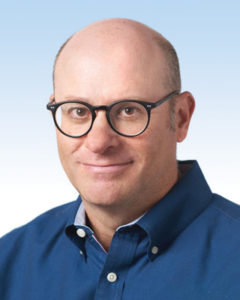
The human psyche is complex and often fragile, so when the COVID-19 pandemic took hold and upended lives in early 2020, emotional effects were bound to surface. Some people proved to be remarkably resilient in the face of challenges to their mental wellness. Others, though, found the pandemic’s impact a struggle, and as it continued with discouraging predictions and no end in sight, their numbers grew. In June 2020, the U.S. Centers for Disease Control and Prevention released the results of a survey showing mental-health disorders had risen dramatically since the beginning of the pandemic, with 40.9 percent of respondents reporting that they were suffering from adverse mental-health conditions, problems with substance abuse and suicidal thoughts.
“Unquestionably, this has been a devastating time in terms of mental health,” says Michael Gelb, M.D., a psychiatrist with Providence St. Joseph Health, who practices in Napa and Santa Rosa. He observes that measures to stop the spread of the SARS CoV-2 virus, which causes COVID-19, have prevented people from engaging in many of the activities that make life meaningful, such as family gatherings and milestone events like graduations and weddings, as well as normal social interactions. The resulting lack of social connection is detrimental to mental well being, and he finds that anxiety and mood disorders are increasingly common, while the symptoms in patients with pre-existing mental-health conditions have gotten worse. “COVID has often times brought that out,” he says, explaining that people who have suffered from anxiety or depression in the past are especially vulnerable, and the added stress can lead to panic attacks, generalized anxiety and excessive worrying.
As a result, the number of people seeking help has increased. “My appointments have gone from six to 10 a day,” says Angela Ulrich, a social worker with St. Joseph Heritage Healthcare in Santa Rosa. In addition, she rarely saw suicidal individuals pre-pandemic, but now she’s getting at least one a day. Wildfires, evacuations and planned power shut-offs in 2020 added to the stress people were feeling from the pandemic, and she finds they are having a hard time managing.
In yet another effect, Gabrielle Kelly, a social worker with Care Network at Providence St. Joseph Health in Eureka, works with patients who have substance-use disorders, and she reports that even people who have been in recovery for years are relapsing.
Mental illness

Heather Carlberg, MD, chair of the Department of Psychiatry at MarinHealth (formerly Marin General Hospital), and she too has seen a growing demand for mental-health services. The patients she treats have serious mental illnesses requiring admittance to the hospital, and the psychiatric unit is nearly always full.
“Everyone I’m seeing is struggling with serious mental illness with significant disturbance in mood or thinking,” she says.
In addition, she does psychiatric consultations on the medical and surgical floors. The emergency room has seen a 30-percent increase in psychiatric volume since the beginning of the pandemic. Some patients are psychotic, while others are in the hospital for another medical need, perhaps hip surgery, and a drug problem becomes apparent. Most of the cases she sees are substance abuse and suicide attempts, and a large number are substance-based suicide attempts. “The pandemic has tipped them over the edge,” she says.
She also finds that more people are using addictive substances than before the pandemic, and, like Kelly, she finds that relapse is common. Early on, when local communities issued shelter-in-place orders in attempts to prevent the coronavirus from spreading, face-to-face care was put on hold, and patients didn’t have their usual support systems to turn to. Consequently, patients who were doing well before the pandemic stopped taking their medications or started drinking again, Others couldn’t go to the pharmacy for their prescribed medication or get their regular supply of methadone, a key part of their treatment for addiction, so they turned to vendors on the street for illegal substances instead. The use of opioids has increased as well. Carlberg reports that Matt Willis, M.D., Marin County’s public health officer, and his team have been tracking non-fatal opioid cases, in which EMTs respond to overdoses and use Narcan to revive individuals. She says the graph was going down, but the curve changed and took an upward turn as a result of the pandemic.
“Marijuana use is prevalent here in Northern California,” adds Carlberg, who observes that cannabis is easy to obtain and popular across age groups including those age 70 or older. At the hospital, the doctors see people in their 70s addicted to methamphetamines and opioids as well. Alcohol causes the most harm because it’s the most available and accepted substance, explains Carlberg. With addiction, the brain finds ways to trick you into using it again. She points out that alcohol is difficult for vulnerable people to resist because it’s socially acceptable and so easily available. We see it on television and billboards and can even get it at the pharmacy, making it very difficult to avoid. Creating further stress, Alcoholics Anonymous meetings, which play a major role in sobriety, were shut down at the beginning of the pandemic, leaving people who rely on them adrift and unable to cope.
Trauma and stressor related disorders
While the pandemic has clearly exacerbated mental-health issues, Carlberg emphasizes that fear, anxiety and depression are not mental illnesses but are reactions to the pandemic. She explains that when psychiatrists see people in the hospital or emergency room, they look for the precipitants—the particular conditions that have made their lives so unbearable they’ve ended up there. Medical professionals use the Diagnostic and Style Manual of Mental Disorders as a guide to diagnosis, and it helps them to differentiate between a mental-health disorder and normal reactions to negative situations. These days, it might be the loss of a job, the danger of becoming homeless, kids not being in school or fear of the pandemic itself. Furthermore, the roles that love, work and society usually play have changed along with daily life’s usual structure, and anxiety and depression are responses to what people intuitively perceive as an abnormal world. Carlberg points out that the major difference between feeling down and anxious and having a mental-health disorder is the level of impact it has on an individual and how it affects daily functioning. “The degree of what’s happening is what’s important to note,” she says.

Emily Porch, M.D., a specialist in child and adolescent psychiatry at Kaiser Permanente Santa Rosa Medical Center, has also seen a rise in mental-health concerns, even in people who were stable and doing well. “The structure that was embedded in our lives is not there,” she says. When people work at home and children are doing distance learning rather than going to school, she adds, they spend more time at home with less to do. They miss opportunities for social connection and, therefore, can’t engage with others the way used to. She finds it understandable that schools can’t hold classes in person when the spread of the coronavirus is unchecked, but it puts pressure on families and creates anxiety. Teenagers and pre-adolescents rely on their peers for emotional support, and when they don’t have them close by, it affects their motivation and ability to focus. Often in normal circumstances, a student will complete schoolwork because a friend is engaged in a subject and finds it stimulating, not because it’s required. Without in-person classes, however, that motivating factor is missing. In addition, children don’t know what’s to come and don’t necessarily understand the news they’re hearing. “Younger kids might have bigger question marks about what it all means,” she says, and if they feel they don’t have control over part of their lives, stress levels can increase.
Gelb believes that the social loss for children is worse than for grown-ups. Adults have a greater ability to have social interactions, often in their work world, and they know the pandemic will eventually be over, he explains. A child’s perception is different. “It’s harder for kids psychologically to go to that place and understand that it’s going to end.”
Older adults are also significantly impacted by the lack of personal contact with others. “Lots of seniors had issues with social isolation even before COVID,” he says, sometimes as a result of being disabled and having difficulty getting out. Now, as the pandemic continues to grip the nation, the problem is significantly pronounced for some seniors. “We’re seeing tremendous anxiety and depression,” he says, as they try to cope with loneliness. On the other hand, some tell him they’re doing fine, and the pandemic has brought out qualities they didn’t know they had.
The other missing piece, regardless of age, is having something to look forward to. “A lot of people had shorter- and longer-term goals that have been put on pause,” says Porch, explaining that career goals, visits with family members and much-anticipated travel are things people mark on their calendars. That, however, has all been stalled, decreasing opportunities for joy and pleasure and further undermining a sense of normalcy.
Reaching out
People who are struggling with mental-health issues, or trauma- and stressor-related disorders (TSRD) can display a wide range of symptoms, including depression, a decrease in energy, appetite changes, headaches, irritability and a feeling of despair and worthlessness.
If you think someone is suffering, it’s acceptable to reach out and ask him or her what they’re feeling, according to Carlberg. “Although people often worry that if they ask about suicide or depression it will make things worse, the data suggests that asking is helpful,” she says. Some patients reach out, often to a primary care physician, who can help assess the situation and possibly refer the patient to a specialist. Gelb finds that some patients want the help of a psychotherapist. “It’s always appropriate to reach out to a therapist,” he says, reporting that despite the increased demand, some are still taking new patients in Napa and Sonoma counties.
If people need help but can’t go to see a doctor face-to-face, they have options and aren’t alone. “We do live in a digital age,” says Ulrich. She suggests alternatives such as telemedicine and apps that allow one to subscribe and get therapy remotely. “So many resources on phones mean you don’t have to leave the house,” she says.
Gelb observes that most people are proficient on Zoom and Facebook, and many of them are in their 80s and 90s. “Interacting in real time is helpful,” he says. “We worry tremendously about our patients who don’t have Zoom. It’s better to see a face.” He adds that it’s also helpful for people to learn something new, and technology gives them opportunities to do so via podcasts, instructional videos or well-sourced articles on the Internet, which can help reduce the feeling of social isolation.
Carlberg believes that despite the circumstances, medical and psychiatric help are available, and she reports that MarinHealth is offering both Zoom and in-person appointments. People suffering from alcohol dependency often believe that Alcoholics Anonymous is not operating, and while it was shut down at the beginning of the pandemic, it’s now up and running, and they should take advantage of it. “People who know they are at risk for relapse need to shore up their support,” she says.
Porch observes that the kind of care patients receive also depends on where they get it. At Kaiser, the severity of the illness determines the treatment, so scheduled appointments during the pandemic are often virtual, while urgent care is in person. Kaiser also offers opportunities for group therapy, including virtual groups that use Cisco Webex.
Reaching out to others and avoiding social isolation is also extremely important. Ulrich points out that we talk about social distancing, but people need to maintain connections. “We want people to practice physically distancing, but engage socially,” she says, suggesting that people use masks and stand in their own driveways or yards to interact with their neighbors. She also recommends involving people in some way to validate what they’re feeling and letting them know that it’s acceptable to feel down and out of sorts. Younger generations should check on their parents and grandparents as well as neighbors who are by themselves. “Keep asking questions and checking,” she says.

Gelb agrees. “Follow up. Say I’m going to call you again. It gives a person something to look forward to.” He suggests setting a specific time for a conversation to express concern, and he says it’s powerful to ask questions and listen so people will know you understand what they’re experiencing.
Sheng Lee, a social worker with St. Joseph Health Care Network in Santa Rosa, also advises people to know their support systems and understand that health care is available.
Mental wellness
Taking care of oneself includes mental as well as physical wellness, and people can adopt a number of strategies. “Everyone approaches this in a different way,” says Porch. Still, she recommends certain practices for everyone, such as maintaining sleep patterns, eating well and exercising regularly. “Schedule something every day that can give you a sense of joy or feeling of accomplishment,” she says, even if you’re having a stressful day. She suggests going for walks, videoconferencing, meeting with friends while wearing masks and maintaining physical distance, meditation and playing games with kids.
“I encourage everyone to be kind to themselves. It’s a stressful time for everyone,” she says.
Unwinding the mysteries of the mind can be difficult in the best of times, and COVID-19 has created unprecedented challenges. Maintaining mental wellness requires balancing physical and mental health. “Think about the things that you know keep you balanced and mentally even and well,” says Carlberg. “There are many ways. It’s important to be very thoughtful and prescriptive with yourself. Force yourself to think about those things and put them into action.”
As for the future, Gelb believes that several more difficult months lie ahead, but eventually, the pandemic will end. “This too shall pass. It’s going to get better, believe it or not,” he says. “Meanwhile, the best way to make it through this dark time is by taking care of ourselves and looking out for each other. We’re social beings, and caring about others and connecting with them is the essence of who we are.”



